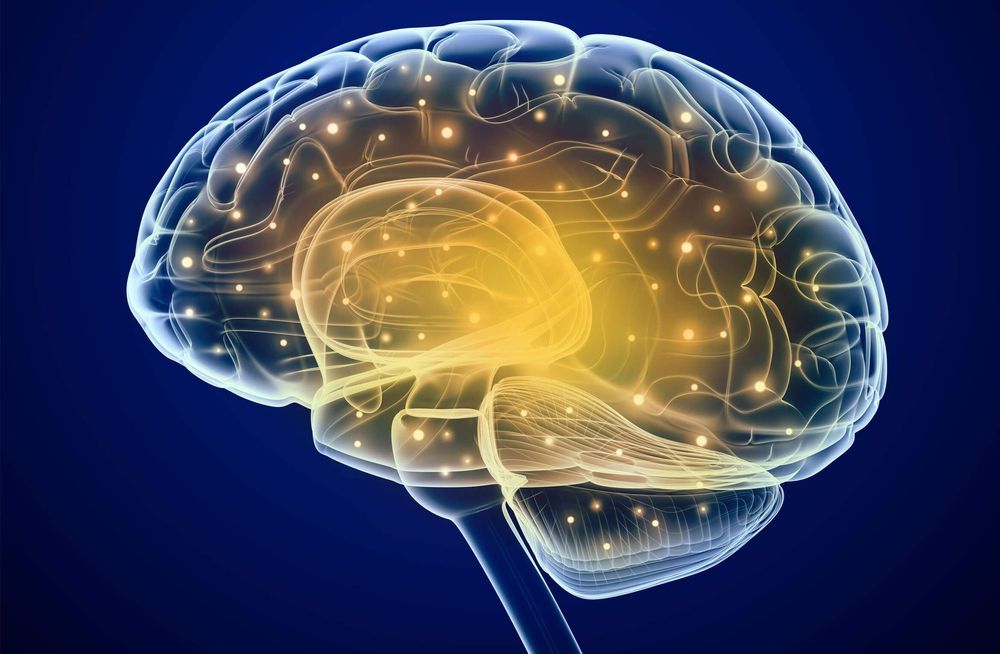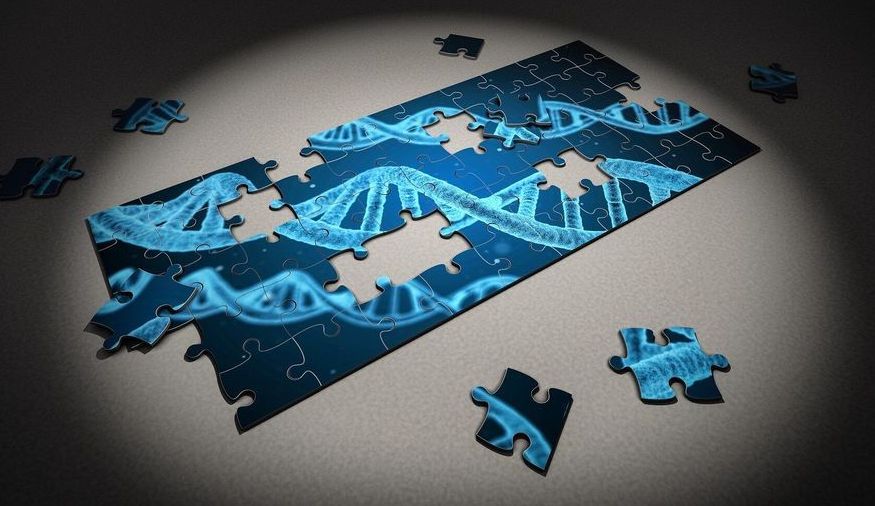But only in the cloud for now.
Nvidia’s Arm wants to win the cloud with per-thread performance.


A recent international scientific study published in the journal PLOS ONE has shown that the way the brain stores temporary information is different depending on the use one might give to that information in the future.
The research analysed the brain activity of 14 participants through functional magnetic resonance imaging while they were performing simple visual memory tasks on a computer screen. Differences in their brain activity patterns were found between participants who had to answer by communicating verbally or by pressing a button.
The memory that is under study is designated “working memory” and is used at all times. It is the type of memory that allows us to memorise a phone number or a license plate and use that information after (or not). This information is used and processed and, if it proves to be important, stored in the long-term memory.

Nanoscale vortices known as skyrmions can be created in many magnetic materials. For the first time, researchers at PSI have managed to create and identify antiferromagnetic skyrmions with a unique property: critical elements inside them are arranged in opposing directions. Scientists have succeeded in visualizing this phenomenon using neutron scattering. Their discovery is a major step towards developing potential new applications, such as more efficient computers. The results of the research are published today in the journal Nature.
Whether a material is magnetic depends on the spins of its atoms. The best way to think of spins is as minute bar magnets. In a crystal structure where the atoms have fixed positions in a lattice, these spins can be arranged in criss-cross fashion or aligned all in parallel like the spears of a Roman legion, depending on the individual material and its state.
Under certain conditions it is possible to generate tiny vortices within the corps of spins. These are known as skyrmions. Scientists are particularly interested in skyrmions as a key component in future technologies, such as more efficient data storage and transfer. For example, they could be used as memory bits: a skyrmion could represent the digital one, and its absence a digital zero. As skyrmions are significantly smaller than the bits used in conventional storage media, data density is much higher and potentially also more energy efficient, while read and write operations would be faster as well. Skyrmions could therefore be useful both in classical data processing and in cutting-edge quantum computing.

Researchers have created a molecule in a single, precisely characterized quantum state by merging two carefully prepared atoms.
Researchers have demonstrated a quantum molecular assembler—a device that takes individual atoms as inputs and merges them into a molecule in a desired quantum state. The team used lasers to trap and cool one sodium (Na) atom and one cesium (Cs) atom, bring them together, and merge them into an NaCs molecule in a specific quantum state. Such a quantum-controlled molecule is a promising building block for quantum computers and could help researchers study the quantum details of chemical reactions.

Researchers at the Department of Energy’s Oak Ridge National Laboratory used quantum optics to advance state-of-the-art microscopy and illuminate a path to detecting material properties with greater sensitivity than is possible with traditional tools.
“We showed how to use squeezed light – a workhorse of quantum information science – as a practical resource for microscopy,” said Ben Lawrie of ORNL’s Materials Science and Technology Division, who led the research with Raphael Pooser of ORNL’s Computational Sciences and Engineering Division. “We measured the displacement of an atomic force microscope microcantilever with sensitivity better than the standard quantum limit.”
Unlike today’s classical microscopes, Pooser and Lawrie’s quantum microscope requires quantum theory to describe its sensitivity. The nonlinear amplifiers in ORNL’s microscope generate a special quantum light source known as squeezed light.

Who are we? Where did we come from? How did we get here? Throughout the ages, humans have sought answers to these questions, pursuing wisdom through religion, philosophy, and eventually science. Evolutionary analyses published by Genome Biology and Evolution (GBE) allow us to peer into the mirror and better understand ourselves as a species, bringing us closer than ever to uncovering the answers to these long-held questions. GBE’s latest virtual issue on human genetics highlights some of the most exciting research published in the journal within the last year and a half, demonstrating the wide variety of evolutionary approaches to this avenue of research as well as a number of fascinating insights into our own biology.
Taking over a decade to complete, the original Human Genome Project cost nearly $3 billion and involved the collective effort of hundreds of scientists. Since then, advances in sequencing technology have resulted in an explosion in human genetics and genomics research, with an estimated one million human genomes sequenced to date. While this wealth of data has the potential to answer some of our most fundamental questions, unlocking its mysteries has necessitated the invention of new analytic and computational methods and the integration of techniques and ideas from diverse biological sciences, including physiology, anatomy, medicine, population genetics, bioinformatics, and computational, molecular, and evolutionary biology.
A key area of investigation involves identifying ways in which humans differ from other primates—in other words, what makes us human? Several studies published over the last 18 months suggest that part of the answer may be found in transcriptional regulation and changes in gene expression. Edsall et al. (2019) evaluated differences in chromatin accessibility, which impacts access of the transcriptional machinery to the DNA, across five primates including humans. They found high levels of differentiation across species, as well as classes of sites that differed based on selection, genomic location, and cell type specificity. More specifically, Swain-Lenz et al. (2019) found that differences in chromatin accessibility near genes involved in lipid metabolism may provide a mechanistic explanation for the higher levels of body fat observed in humans compared to other primates. Arakawa et al.

Interesting technology looking to revolutionize both medical imaging and brain computer interfacing.
Han from WrySci HX explains the amazing Openwater system, which could rival Neuralink in the Brain Machine Interface space. More below ↓↓↓
Support 🙏
Patreon: https://www.patreon.com/wrysci_hx
OnlyFans: https://onlyfans.com/han_xavier
Subscribe! =]
Timestamp:
0:00 — Introduction
0:53 — Company and Founder
2:38 — How the tech works
4:49 — Applications including BMI
7:41 — Why it may rival Neuralink
This is also pretty cool https://www.sens.org/
Transhumanism is the way =] Let’s reduce suffering through science and technology.
Other channels if you’re interested:
https://www.youtube.com/channel/UCBBizGmGr8JS1s1vh2UCACA
https://www.youtube.com/channel/UCykciId6TObQ-JqKadwyJbw
Neuralink’s Biggest Rival You Haven’t Heard Of: Openwater by Han from WrySci HX.

A new D-Theory of Time, or Digital Presentism, is predicated on reversible quantum computing at large, including the notion of ‘Anti-Time’ around which the present article revolves. If you think Anti-Time is nothing but fiction, and doesn’t apply to our reality, think again. As Dr. Antonin Tuynman writes in his Foreword to The Physics of Time: D-Theory of Time & Temporal Mechanics by Alex M. Vikoulov: “Whereas quantum physics and relativity theory have been solidly in place for over a century now, stubbornly and forcedly we still cling to atavistic interpretations, which are no longer in line with the well-established findings of our experiments in physics. Amidst the turmoil of this spinning convoluted dreamtime of our digital Cyberbardo, Vikoulov carves out a trajectory for understanding.”
#AntiTime #PhysicsofTime #DTheoryofTime #DigitalPresentism #TemporalMechanics
Many temporal concepts are undoubtedly extremely counterintuitive. Time directionality and time symmetry are especially notorious ones. Any of the possible pasts may have led to the present “digital” conscious instant. This is a strange idea if you are accustomed to looking at the world in a strictly linear, deterministic way, but it reflects the uncertain world described by quantum mechanics. A major counterargument to the multitude of pasts could be a combinatorial explosion of observer ‘anti-time’-lines, i.e., digital timelines extending in the opposite temporal direction from the present temporal singularity to the Alpha Point (Digital Big Bang). So, how in the quantum multiverse are those digital anti-timelines supposed to converge once again at the Alpha Point?
The answer has to do with reversible entropy (not observable, of course, in the Newtonian classicality). Reversing information entropy is like going from higher complexity to lower complexity. As long as you continue to unwind the complexity bit-by-bit, you’ll end up at the point of the lowest possible complexity with, perhaps, 1 bit of entropy — the Alpha Point — the convergent point of all anti-timelines and simultaneously the point of origin of all observer probable timelines.
All theoretical roads lead to the physics of information, otherwise known as Digital Physics. Researchers suspect that ultimately the axioms of quantum theory will be about information: what can and can’t be done with it. One such derivation of quantum theory based on axioms about information was proposed in 2010. “Loosely speaking,” explained Jacques Pienaar, a theoretical physicist at the University of Vienna, “… principles state that information should be localized in space and time, that systems should be able to encode information about each other, and that every process should in principle be reversible, so that information is conserved.”


This cloud-based quantum computing service includes verification and is now available to members of the IBM Q Network.
IBM and Cambridge Quantum Computing have built a random number generator that uses quantum computing with verification and plan to offer the new capability as a cloud service.
IBM and CQC announced the news Thursday at the final day of the IBM Q Summit. CQC developed the application, which generates true maximal randomness, or entropy.